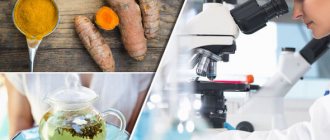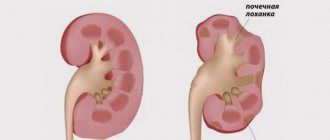Characteristic
The inflammatory process , which involves the mucous membrane of the stomach, as well as the small intestine, is commonly called gastroenteritis.
The main source of pathology development is the penetration of infection (viral or bacterial) into the baby’s body.
Activation of pathogenic microflora and its waste products have a negative effect on the mucous membrane , irritating it. If this process is protracted, inflammation develops.
As a result of damage to the mucous membranes, the functionality of the stomach and small intestine is disrupted, the process of digesting food is complicated, which further aggravates the situation.
Food entering the stomach becomes a source of irritation for its mucous membrane, and if appropriate measures are not taken in time, inflammation becomes more intense , and unpleasant symptoms of the disease occur.
Basic principles of diet therapy for gastroenteritis
Previously, doctors believed that you should not eat at all on the first day of illness. Nowadays, eating is allowed if there is an appetite (you can’t force feed!), It’s important to just choose the right foods. The purpose of the diet is to create conditions under which the load on the digestive tract is minimized and the inflammatory process is inhibited.
The menu should be strictly developed based on the list of permitted and prohibited foods in order to make the work of the stomach and intestines as easy as possible and speed up recovery. Products must be carefully processed and the cooking time and mode must be observed. Hasty introduction of a particular product (especially from the list of prohibited ones) or improper processing can negate the entire treatment.
Basic principles of the diet:
- meals for gastroenteritis are frequent, fractional (portions of food and drinks should be made small to avoid attacks of vomiting);
- food should be ground and pureed;
- the temperature of liquid and food should be approximately equal to body temperature;
- In the first days, a constant supply of fluid to the body is necessary (preventing dehydration and removing toxins).
Reasons for development
Most often, gastroenteritis in a child occurs due to the penetration of viruses and infections into the body.
Infection can occur as a result of consuming low-quality (or contaminated) food, improper preparation of food, or improper storage (spoiled food is optimal conditions for the active growth of bacteria ).
The infection can also enter the body through drinking contaminated water, through contact with a person carrying the virus, through failure to comply with personal hygiene rules (unwashed hands after visiting the toilet, outside), or through the use of shared utensils (if they have not been washed well).
The causative agents of infection leading to the development of gastroenteritis are:
- viruses (in most cases rotavirus infection);
- pathogenic bacteria;
- parasites, worms.
If the disease is caused by non-infectious causes, the following may be considered negative factors:
- Uncontrolled use of certain groups of medications that aggressively affect the gastric mucosa and suppress the natural intestinal microflora.
- Allergic reactions, individual intolerance to certain foods and their components.
- Poisoning by chemicals entering the body with food (for example, mercury when eating fish, which is capable of accumulating it).
- Incorrect introduction of complementary foods (new dishes in an infant’s diet can trigger the development of an allergic reaction).
- Changes in a woman’s diet during lactation (the composition of breast milk changes, as a result of which the child may experience stool disorders and dysbacteriosis).
Do children have hemorrhoids? Find out the answer right now.
Gastroenteritis in infants and children after 1 year
When this disease occurs in children over one year of age, the diet is not very different from the diet of adults. However, it should be remembered that children's immunity is not yet strong enough and malnutrition can greatly weaken it. Therefore, you need to constantly monitor the child and offer him food and drink as often as possible. You should not introduce any new dishes into your diet; foods should be familiar. Small children can be given baby food in jars: it is an unsalted puree and is well absorbed by the body.
For gastroenteritis in breastfed infants, breastfeeding should be continued. The breast should be offered more frequently, but the duration of sessions should be shorter to avoid vomiting. If the child is on artificial nutrition, then the formula is also given more often, but less. It is impossible to dilute the food, as this can lead to malnutrition of the baby, which is unacceptable.
Complete abandonment of the diet after treatment is unacceptable. It must be observed for at least two weeks after recovery, and subsequently harmful foods should be introduced gradually and in small portions. In addition, during this time you should abstain from alcohol and the use of any medications other than those prescribed by your doctor.
So, diet and preventing dehydration is an effective tool for treating gastroenteritis in both children and adults. Prevention of this disease is also important: it is necessary to eat well and observe the rules of personal hygiene.
Clinical manifestations
Depending on the reasons that led to the development of the disease, its clinical picture may vary.
| Sign | Why does it occur | How it manifests itself |
| Painful sensations in the stomach area | The gastric mucosa consists of epithelial cells that are sensitive to various types of irritants. Damage and inflammation of the mucous membrane leads to irritation of these cells, which provokes a painful reaction. | The pain is acute and manifests itself in the form of spasms. Unpleasant sensations can occur at any time, as a rule, they intensify during bowel movements. |
| Nausea | The waste products of pathogenic microflora, harmful chemicals, cause poisoning of the body. One of the signs of intoxication is nausea. | The child complains of discomfort in the area between the ribs just below the sternum. These sensations are accompanied by breathing problems, drooling, and hyperhidrosis. |
| Gagging | Toxic substances that enter the child’s blood activate the vomiting center located in the medulla oblongata. As a result of this, the brain sends the appropriate command to the muscles of the diaphragm, causing them to begin to contract intensely. | Depending on the form of the disease, vomiting can be single (in mild cases) or multiple (in severe cases). |
| Diarrhea | With gastroenteritis, the processes of food digestion, fluid absorption, and its secretion are disrupted. As a result, the amount of fluid in the intestinal area increases sharply, which leads to dilution of the stool. | The frequency of bowel movements ranges from 2 to 15 times a day. The stool is liquid, foamy, and may be greenish or transparent. Blood and mucus can be found in the stool. |
| Digestive disorders | The motility of the gastrointestinal tract is disrupted, as a result of which food moves faster from the stomach to the intestines without having time to be completely digested. | The child complains of pain, heaviness in the stomach, rumbling in the stomach, loss of appetite, bloating, belching, heartburn. |
| Temperature increase | Hyperthermia is a natural response of the body to the penetration of infections and toxic substances. | If the disease is mild, the temperature may remain normal (or rise slightly). In severe cases, hyperthermia is significant, up to 39 degrees. |
| Signs of intoxication | Waste products or decomposition of harmful microorganisms cause toxic damage. | The child feels general weakness and headaches. |
| Difficulty breathing | Viral infections that provoke the development of gastroenteritis also negatively affect the mucous membrane of the respiratory tract. | Nasal congestion, shortness of breath, dry cough. |
How to treat gastritis in a child? Find out about this from our article.
Why do you need to follow a diet when you have gastroenteritis?
The presence of pathogenic microflora and toxic products of their vital activity in the digestive organs significantly disrupts the general well-being of the patient due to:
- intoxication of the body;
- disruptions in the functioning of the gastrointestinal tract;
- violations of normal indicators of the body’s water-salt balance, that is, dehydration.
Therefore, treatment should be comprehensive and aimed at:
- elimination of pathogenic microflora from the body;
- restoration of the normal digestive process and intestinal microflora;
- saturating the body with the necessary food ingredients that are not capable of further irritating the inflamed mucous membrane of the housing and communal services.
Dietary nutrition for gastroenteritis is aimed at observing these principles; without them, recovery is impossible.
M. I. Pevzner developed the basics of therapeutic nutrition. He believed that the main and even the main factor influencing the healing process is nutrition. The scientist developed a specific diet for each disease, which was later called tables.
For inflammatory diseases in the intestines with symptoms of diarrhea, according to the teachings of Pevzner, Diet No. 4 is prescribed. According to this diet, nutritional therapy should:
- promote the elimination of inflammation, fermentation and rotting;
- do not cause irritation in the intestines.
Compliance with these conditions leads to the normalization of digestive function.
Types and forms
The classification of pathology is carried out depending on numerous factors, such as the causes of the development of the disease, its course, and severity.
So, depending on the reasons , there are:
- viral;
- bacterial;
- nutritional (develops with poor diet, consumption of large amounts of spicy food, frequent overeating);
- allergic (in the presence of an allergic reaction to substances - irritants);
- toxic (as a result of poisoning of the body).
Depending on the severity, gastroenteritis can be:
- Light . Hyperthermia is insignificant, nausea and vomiting are infrequent phenomena, occurring about 2-3 times a day.
- Average . The temperature rises to 38 degrees, vomiting and diarrhea occur up to 10 times a day. There are mild signs of dehydration, manifested in the form of dry skin and mucous membranes, thirst.
- Heavy . The temperature rises to dangerous levels, there is profuse vomiting, obvious signs of dehydration, and the baby often refuses to drink.
Gastroenteritis can be acute or chronic . The acute form develops suddenly, for example, with severe food poisoning.
Chronic gastroenteritis is a consequence of prolonged exposure to adverse factors on the child’s body.
What can you eat during the acute period?
Nutrition for gastroenteritis should be agreed upon with the attending physician; the severity of symptoms, the age of the patient, and concomitant pathologies should be taken into account. As a rule, when you have an appetite, you can eat crackers without additives, rice porridge, and bananas. These products envelop the gastric mucosa and do not allow gastric juice to aggressively affect the irritated mucosa.
Bananas must be ripe; rotten or green ones should not be given. This fruit is rich in potassium, which helps restore electrolyte balance in the body, as well as inulin, which accelerates the growth of beneficial microflora in the intestines.
The fruit contains pectin, which is capable of binding liquid from the intestinal lumen, and the colloidal mass, when moving, “captures” undigested food debris and microorganisms with their waste products.
Bananas help quickly get rid of the feeling of hunger, while they do not overload the digestive organs. You can eat 2-3 bananas a day, and they also need to be mashed until pureed. The rice should be thoroughly boiled so that the mucous membrane is not injured. If you don’t feel like eating, you can only drink rice water.
In the first days of illness, porridge is prepared without adding milk, butter or dried fruits. Rice reduces the manifestations of flatulence, protects the mucous membrane, promotes the elimination of toxins, improves peristalsis, normalizes the formation of feces, and absorbs excess moisture. The first day after the onset of gastroenteritis, you can also drink weak chicken broth, eat a baked apple, vegetable puree from potatoes and carrots. Apples and carrots also contain pectin.
Complications and consequences
Symptoms of the disease can be very dangerous.
In particular, excessive vomiting and diarrhea contribute to the disruption of metabolic processes in the body, as a result of which all its internal organs suffer.
In addition, fluid is removed from the body through vomit and feces, which, if the disease is severe, can lead to the death of a small child. For older children, the consequences are also unfavorable (coma, loss of consciousness, convulsions).
Toxic poisoning of the body, a significant increase in body temperature can also lead to unpleasant and dangerous consequences, including death.
How does a child have a gluten allergy? Read about it here.
Principles of treatment
Treatment consists of taking medications designed to eliminate the cause of the disease and its symptoms.
The doctor prescribes:
- Antibiotics (for bacterial infections).
- Antiviral drugs (if the cause of the pathology is a viral infection).
- Sorbents for removing toxins.
- Enzyme preparations to normalize the process of food digestion.
- Remedies for dysbacteriosis to restore intestinal microflora.
In severe cases, the child needs intravenous medications. This is necessary to restore the body’s water balance and detoxify.
Diet
It is important to follow a strict diet. Many foods that the child is accustomed to must be excluded. These products include:
- fresh baked goods;
- vegetables, fruits, legumes;
- hot and spicy dishes;
- pickles and canned food;
- milk;
- sweets.
Must be consumed:
- bread in the form of crackers;
- cereal soups cooked in vegetable or weak meat broth;
- lean meat and fish (boiled or steamed);
- porridge cooked in water;
- skim cheese;
- tea (not strong), jelly, dried fruit compote.
Useful foods for gastroenteritis
At the first manifestations of gastroenteritis, special attention should be paid to the patient’s nutrition. For people who have problems with the gastrointestinal tract, diet table No. 4 is prescribed.
During the period of acute manifestations of gastroenteritis, food intake should be limited. If the victim can feed himself, then he needs to be given crackers (only white bread), bananas and rice porridge. The food must be eaten warm, the meals must be divided and in small portions.
After the main symptoms subside, the patient can expand the list of dishes and products. You can eat any boiled porridge (preferably viscous - oatmeal, wheat), boiled vegetables (except those that contain coarse fiber: cauliflower, potatoes, carrots), fruits, fish and low-fat meats, dried white bread. You are allowed to drink jelly, compotes, fruit juices and tea.
Traditional medicine for gastroenteritis
At the first manifestations of gastroenteritis, it is necessary to limit food intake and increase fluid intake (so that dehydration does not begin).
If diarrhea and vomiting are too severe, you need to give the patient a saline solution . To prepare it you need 1 liter of boiled water, 2 tablespoons of sugar and 1 tablespoon of salt. Sweet tea, jelly and rosehip decoction are also considered useful for consumption. In order not to provoke vomiting, drink liquid no more than 50 milliliters at a time.











